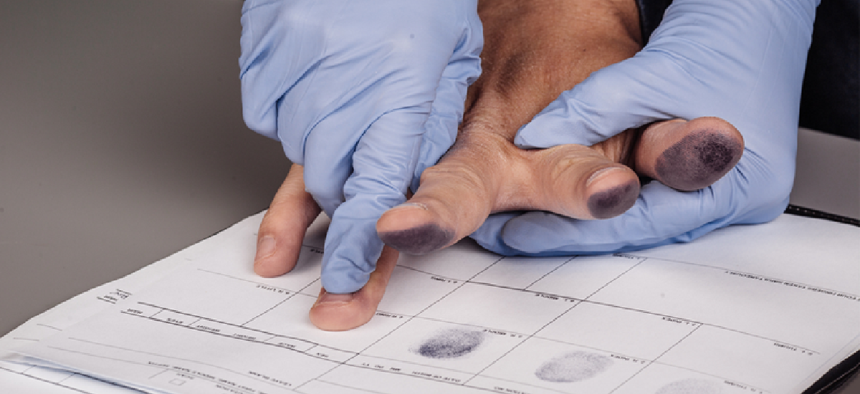Fingerprint capture tech improving, but not enough


Connecting state and local government leaders
The Nail to Nail challenge aims to create a sensor system that produces a high-quality rolled fingerprint without relying on a trained device operator.
Faster and more accurate fingerprint capture technology may be on the horizon, thanks to the Intelligence Advanced Research Projects Activity.
In 2017, the agency stood up two fingerprint technology programs: Odin for detecting fake or altered fingerprints and Nail to Nail (N2N) for advancing fingerprint analysis.
While the N2N program did develop a way to more accurately capture fingerprints compared to lower-tech plain impressions, it’s not exactly user friendly. In order to get an accurate fingerprint capture from one side of the fingernail to the other, the operator must physically hold a subject’s finger while repeatedly rolling it on a live scan platen, a process that the National Institute of Standards and Technology described as “time consuming” and “uncomfortable” in a new report on IARPA's N2N challenge.
“Compared to [Nail to Nail] impressions, plain impressions capture a limited region of the finger, resulting in less information being made available for searching with automated fingerprint identification algorithms,” the report stated. “This lack of searchable information is especially detrimental in forensic applications because latent fingerprints found at crime scenes are sometimes formed from areas of the finger not imaged by a plain impression.”
That led IARPA officials to set up the challenge of creating a fingerprint sensor that produces high-quality rolled equivalent without relying on a trained device operator. It canvassed eight organizations from industry and academia to develop better sensor technologies that are more seamless than N2N and perform better than plain impressions. The challenge had four separate prizes: one for logging the fastest N2N acquisition time, two for the device with the most accurate image capture and a grand prize for the best overall identification system.
Two companies -- Advanced Optical Systems and Green Bit -- took home the first three prizes, each worth $25,000. However, none of the solutions wound up coming close enough to match the accuracy of N2N images and as a result, no one took home the $100,000 grand prize.
The urgency for better fingerprint analysis is real. While popular culture has pushed the idea that individual fingerprints are as unique as snowflakes, forensic scientists have increasingly raised questions about the accuracy of current technologies.
Last year the American Association for the Advancement of Science released a report concluding that any courtroom testimony or reports stating or implying that fingerprints collected from a crime scene belong to a single person are “indefensible and lack scientific foundation.” This was particularly true for latent fingerprint analysis, one of the metrics IARPA tracked through its N2N challenge.
This article was first posted to FCW, a sibling site to GCN.




